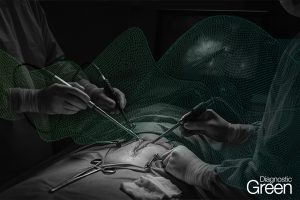Indocyanine green (ICG) fluorescence imaging is an easy and reproducible method to detect hepatic lesions, both primary and metastatic. This review reports the potential benefits of this technique as a tactile mimicking visual tool and a navigator guide in minimally invasive liver resection of colorectal liver metastases (CRLM). PubMed and MEDLINE databases were searched for studies reporting the use of intravenous injection of ICG before minimally invasive surgery for CLRM.
The search was performed for publications reported from the first study in 2014 to April 2021. The final review included 13 articles: 6 prospective cohort studies, 1 retrospective cohort study, 3 case series, 1 case report, 1 case-matched study, and 1 clinical trial registry. The administered dose ranged between 0.3 and 0.5 mg/kg, while timing ranged between 1 and 14 days before surgery. CRLM detection rate ranged between 30.3% and 100% with preoperative imaging (abdominal computed tomography/magnetic resonance imaging), between 93.3 and 100% with laparoscopic ultrasound, between 57.6% and 100% with ICG fluorescence, and was 100% with combined modalities (ICG and laparoscopic ultrasound) with weighted averages of 77.42%, 95.97%, 79.03%, and 100%, respectively.
ICG fusion imaging also allowed to detect occult small-sized lesions, not diagnosed preoperatively. In addition, ICG is effective in real-time assessment of surgical margins by evaluating the integrity of the fluorescent rim around the CRLM.




